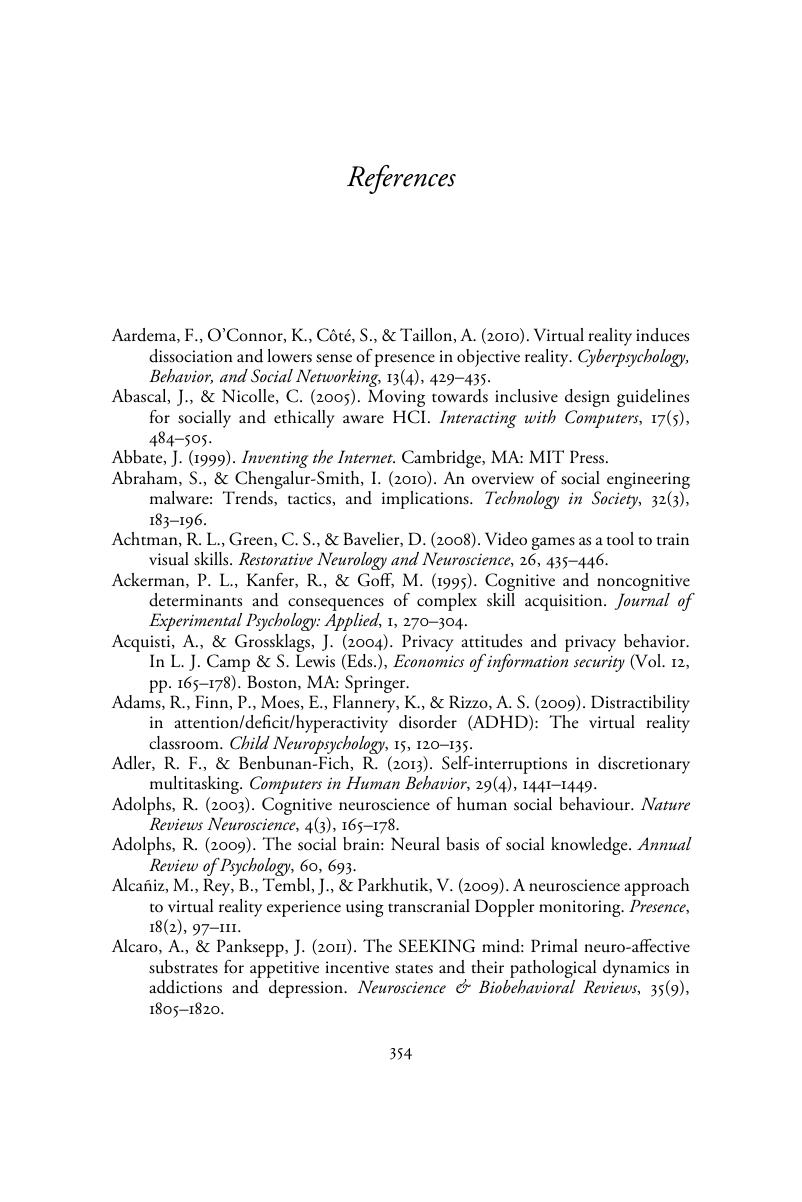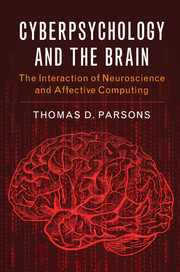Book contents
- Cyberpsychology and the Brain
- Cyberpsychology and the Brain
- Copyright page
- Dedication
- Contents
- Figures
- Tables
- Preface
- Acknowledgments
- Part I Introduction
- Part II The Medium Is the Message that Changes the Brain
- Part III Cyberpsychology and the Neurosciences
- Part IV Applied Cyberpsychology
- Part V Conclusions
- References
- Index
- References
References
Published online by Cambridge University Press: 13 July 2017
- Cyberpsychology and the Brain
- Cyberpsychology and the Brain
- Copyright page
- Dedication
- Contents
- Figures
- Tables
- Preface
- Acknowledgments
- Part I Introduction
- Part II The Medium Is the Message that Changes the Brain
- Part III Cyberpsychology and the Neurosciences
- Part IV Applied Cyberpsychology
- Part V Conclusions
- References
- Index
- References
Summary

- Type
- Chapter
- Information
- Cyberpsychology and the BrainThe Interaction of Neuroscience and Affective Computing, pp. 354 - 430Publisher: Cambridge University PressPrint publication year: 2017



